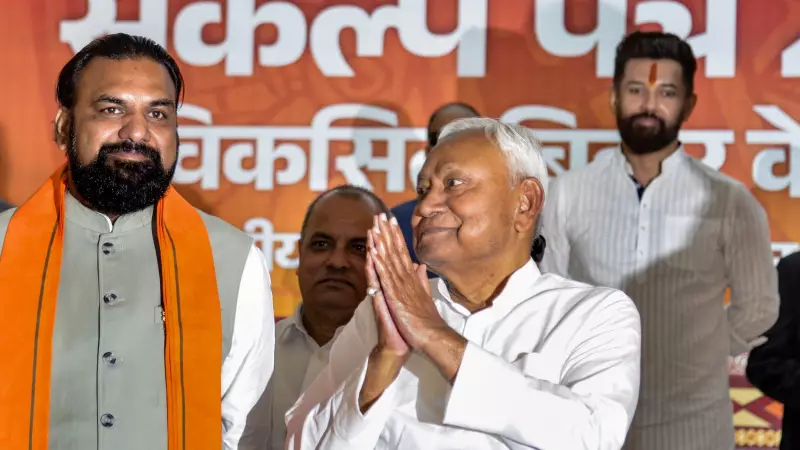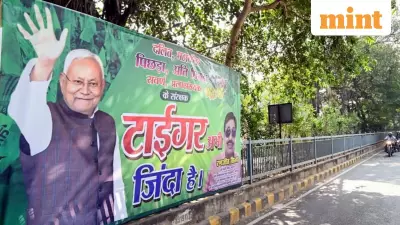
In a stunning display of electoral dominance, Bihar has rewritten its political record books with the highest victory margins in state history during the 2025 Assembly elections. The ruling National Democratic Alliance, spearheaded by Chief Minister Nitish Kumar's Janata Dal (United), has not only secured a landslide return to power but has done so with unprecedented margins that underscore the coalition's overwhelming popularity.
Record-Breaking Victory Margins
The statistics reveal an extraordinary pattern of dominance across Bihar's political landscape. The average victory margin for winning candidates reached 20,940 votes, while the median margin stood at 18,510 votes. Both figures represent new state records, breaking previous benchmarks established during the 2015 Assembly polls.
The JD(U) emerged as the standout performer in this record-setting election, nearly doubling its seat count from 43 in 2020 to an impressive 85 seats in the current assembly. More remarkably, the party's average winning margin skyrocketed from under 12,300 votes to over 23,620 votes, while its median margin improved dramatically from 10,440 votes to 22,550 votes.
Political analysts attribute this significant improvement to the return of Chirag Paswan's Lok Janshakti Party (Ram Vilas) to the NDA fold. The party had contested the 2020 elections independently, splitting the JD(U)'s vote share in 32 constituencies, but their reunion has clearly paid dividends for the alliance.
Party-Wide Dominance and Contrasting Fortunes
Among the major alliance partners, the Bharatiya Janata Party followed the JD(U)'s impressive performance with strong numbers of its own. The BJP secured an average margin of 23,000 votes and a median margin of 21,860 votes on its way to becoming the single-largest party with 89 seats. This represented a notable improvement from their 2020 performance, when their average margin was 19,360 votes and median margin stood at 16,300.
The LJP(RV)'s transformation has been particularly dramatic. From winning just one seat with a narrow margin of 333 votes in 2020, the party captured 19 of the 28 seats it contested this time, recording an average margin of 20,930 votes and a median margin of 20,320 votes.
Meanwhile, the Opposition Mahagathbandhan experienced a significant downturn. The Tejashwi Prasad Yadav-led Rashtriya Janata Dal suffered a massive setback, plummeting from 75 seats in 2020 to just 25 seats this election. Their average winning margin dropped to 10,190 votes from 16,360 votes, while the median margin fell to 8,110 votes from 13,690 votes.
The Congress party's dismal performance saw them reduced to just 6 seats from 19 in the previous assembly. Their average margin collapsed from 13,550 votes to 7,200 votes, though their median margin saw a slight increase from 6,330 to 7,210 votes.
Interestingly, among all parties that won seats, the All India Majlis-e-Ittehadul Muslimeen recorded the highest average margin at 29,350 votes and the highest median margin at 28,730 votes across the five constituencies it secured.
Individual Seat Triumphs and Close Contests
At the constituency level, JD(U)'s Kaladhar Prasad Mandal created history by securing the highest individual victory margin of 73,572 votes in Rupauli. This constituency has remained a JD(U) stronghold, with the party winning it consecutively since 2010.
The NDA's dominance was further highlighted by the fact that 15 seats witnessed victory margins exceeding 50,000 votes, all won by the ruling coalition. In stark contrast, the Mahagathbandhan's highest margin was secured by RJD's Shankar Prasad in Paroo at 28,827 votes, which ranked only 63rd among all constituencies in the state.
Despite the record-breaking margins, the election also featured numerous nail-biting finishes. A total of 31 seats were decided by margins of less than 5,000 votes, including 11 constituencies where the victory margin was under 1,000 votes.
The closest contest occurred in Sandesh constituency, where JD(U)'s Radha Charan Sah defeated RJD's Dipu Singh by a mere 27 votes. In this dramatic three-way fight, Jan Suraaj candidate Rajiv Ranjan Raj secured 6,040 votes, effectively spoiling the RJD's prospects. NOTA (None of the Above) also played a significant role with 4,160 votes in this constituency.
Other tightly contested seats included Ramgarh in Kaimur district, where BSP's Satish Yadav defeated BJP's Ashok Kumar Singh by just 30 votes, and the SC-reserved Agiaon seat, where BJP's Mahesh Paswan won by a margin of only 95 votes against CPI(M-L)L's Shiv Prakash Ranjan.
The election results demonstrate a clear mandate for the NDA government while also highlighting the competitive nature of Bihar's democracy, where both landslide victories and photo finishes coexist in the same electoral landscape.





